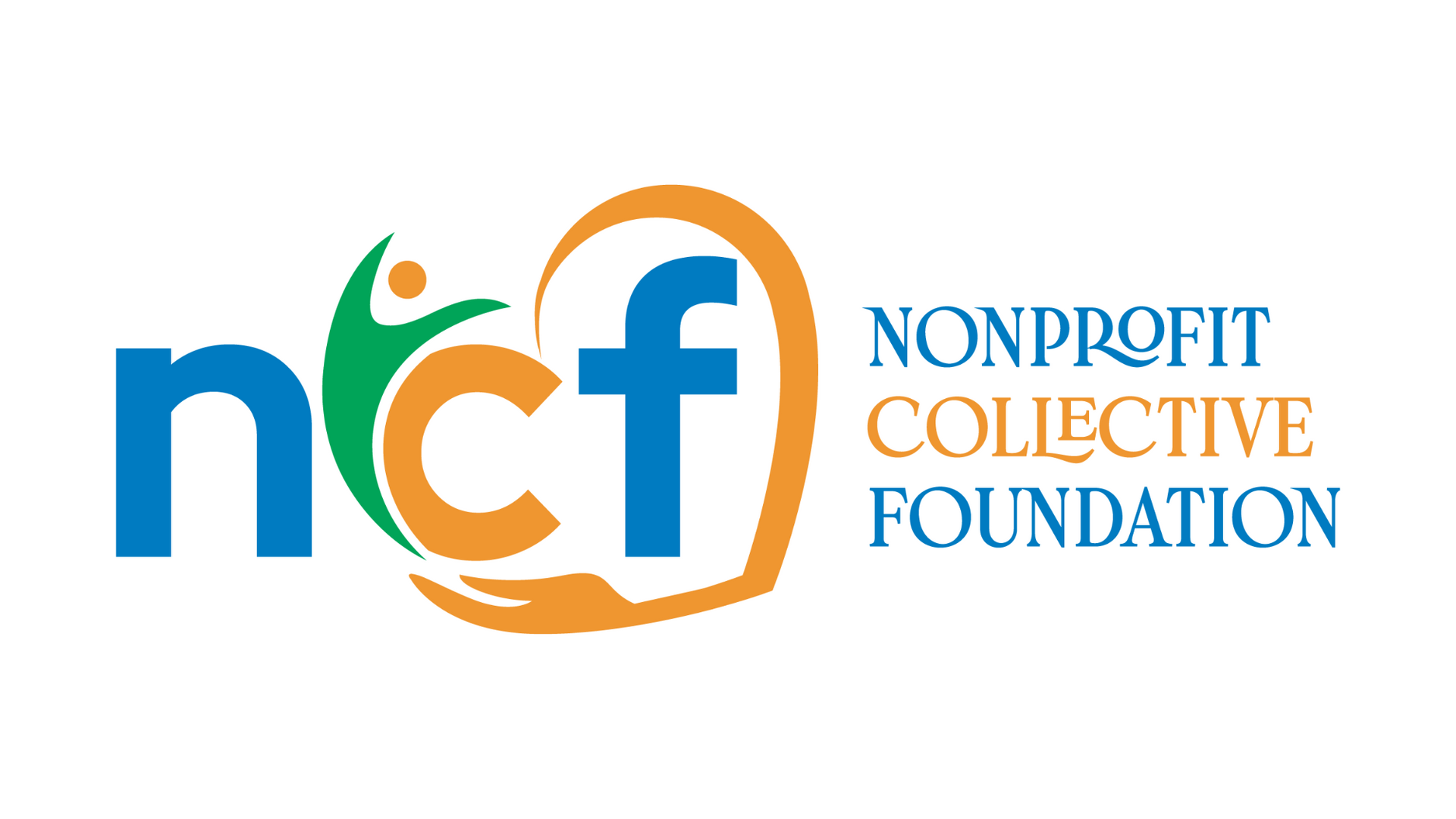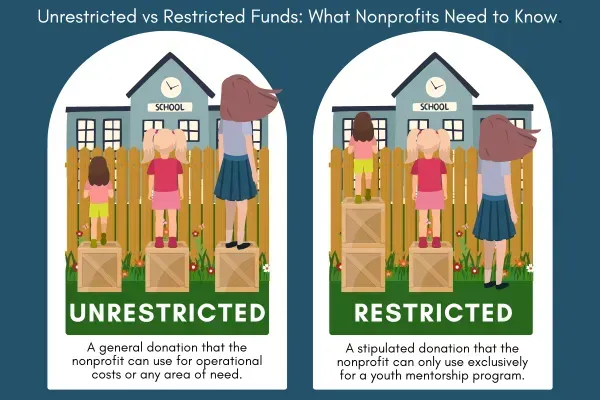Danette O'Connell • January 21, 2025
The Power of Storytelling: Connecting Your Mission with Your Audience
Storytelling is a powerful tool for nonprofits to inspire action and connect with their audience. Here’s how to craft and share compelling stories:
1. Focus on the Human Element of Your Mission
Highlight real-life stories of individuals or communities positively impacted by your work. These personal narratives create an emotional connection with your audience and make your mission relatable and memorable.
These stories should reflect diverse perspectives and show the multifaceted impact of your organization’s work. The more authentic and personal, the stronger the connection.
2. Enhance Your Stories with Visual Elements
Combine your narrative with high-quality photos, videos, or infographics to make it more engaging. Visuals not only capture attention but also leave a lasting impression and increase the likelihood of sharing your story with others.
Use professional-quality images or videos whenever possible to maintain a polished and credible appearance.
3. Weave Your Mission Seamlessly into the Narrative
Ensure that your mission is naturally integrated into the story. By showing how your work directly addresses the challenges faced by the individuals or communities in your narrative, you reinforce the importance of your cause.
Avoid overloading the story with too much information; instead, focus on the emotional connection and keep the mission statement clear and concise.
4. Inspire Action with a Clear Call to Action (CTA)
Every story should include a clear and compelling CTA that encourages your audience to take the next step. Whether it’s donating, volunteering, or sharing your story, the CTA should align with your goals and make it easy for supporters to act.
Effective CTAs are actionable, specific, and time-sensitive, creating urgency and motivation to act immediately.
5. Make Storytelling a Consistent Practice
Incorporate storytelling into your regular communication strategy. Share stories through newsletters, social media, events, and other platforms to keep your audience engaged and inspired by your ongoing impact.
A consistent storytelling strategy builds brand recognition and strengthens your connection with supporters over time.

Running a successful nonprofit requires more than just a strong mission it depends on a well-equipped and knowledgeable team. From clear communication to effective management, staff training, and access to essential resources play a vital role in an organization’s long-term success. Without the right skills and tools, even the most passionate team members may struggle to fulfill their roles efficiently. By prioritizing learning and growth, nonprofits can build a stronger foundation, increase their impact, and better serve their communities. In this blog, we’ll explore why training and resources are essential for nonprofit success and how they contribute to a thriving organization. Why Are Training and Resources Important for Nonprofits? Nonprofits operate with a mission driven purpose, but passion alone isn’t enough to sustain long-term success. Staff and volunteers need proper training and access to resources to manage operations efficiently and adapt to challenges. Without ongoing learning, teams may struggle with inefficiencies, burnout, and disorganization. The Benefits of Training and Resources Improved Efficiency: Well-Trained staff work smarter, not harder, reducing hard facing challenges Stronger Leadership: Leadership development helps managers make informed decisions and inspire their teams Better Communication & Engagement: Effective communication leads to stronger relationships with donors, volunteers, and communities Greater Mission Impact: With the right skills, nonprofits can execute programs more effectively and expand their reach Enhance its reputation: A high employee retention rate can significantly strengthen your nonprofit’s reputation in the eyes of donors, potential job candidates, and other stakeholders Essential Types of Training and Resources for Nonprofit Teams Financial Resources: Grants, donations, and funding strategies to maintain stability and growth Educational Resources: Access to guides, webinars, social media, and industry research to stay updated on best practices and trends Leadership & Management Training: Equips leaders with the skills to guide teams and make strategic decisions Fundraising & Grant Writing Workshops: Helps staff secure financial resources through compelling proposals and donor engagement Technology & Software Training: Teaches teams to use digital tools for project management, communnication, and data analysis Diversity, Equity, and Inclusion (DEI) Training: Encourages inclusive practices that enhance workplace culture and community engageme

The Nonprofit Collective Foundation (NCF) is a dynamic organization dedicated to empowering grassroots nonprofits across the United States. With a focus on providing unrestricted funding and valuable resources, NCF aims to help small organizations expand their reach, operate more efficiently, and create lasting impacts in their communities. The Mission of NCF At its core, the Nonprofit Collective Foundation's mission is to empower grassroots organizations throughout the United States. They achieve this by: Providing access to free resources Offering unrestricted funding opportunities Supporting operational and sustainable revenue growth This approach allows NCF to build capacity for smaller nonprofits, typically those with annual budgets of $1 million or less. By focusing on these organizations, NCF aims to create a ripple effect of positive change across various communities and causes. Key Aspects of NCF's Work 1. Unrestricted Funding One of the most significant ways NCF supports nonprofits is through its commitment to unrestricted funding. This type of financial support allows organizations to allocate resources where they're needed most, rather than being tied to specific projects or initiatives. Unrestricted funds can be used for: Operational costs Staff salaries Technology upgrades Program expansion By providing this flexibility, NCF enables nonprofits to address their most pressing needs and maximize their impact. 2. Resource Provision Beyond financial support, NCF offers a wealth of resources to help nonprofits strengthen their foundations for long-term success. These resources include: Guidance on fundraising strategies Mentorship opportunities Networking events Educational workshops Grant-writing The NCF mentoring opportunities are particularly valuable, as they connect experienced professionals with emerging nonprofit leaders, fostering growth and knowledge sharing within the sector. Advocacy for Fair Compensation and Representation NCF recognizes the importance of fair compensation and representation within the nonprofit sector. As part of their mission, they advocate for: Competitive salaries for nonprofit employees Diverse leadership in nonprofit organizations Equitable distribution of resources across different causes and communities This advocacy work helps to create a more sustainable and inclusive nonprofit ecosystem. NCF Charitable Initiatives The Nonprofit Collective Foundation supports a wide range of charitable initiatives, focusing on organizations that: Increase access to educational resources and training Create a positive social impact Combat community deterioration Support mutual aid efforts Develop tools for a sustainable future through climate justice and internet freedom efforts Strengthen democracy These focus areas allow NCF to support a diverse array of nonprofits, each working to address critical societal needs. The NCF Fundraising Summit One of the key events in the NCF calendar is the annual NCF Fundraising Summit. This gathering brings together nonprofit leaders, fundraising experts, and philanthropists to share insights, strategies, and best practices for effective fundraising. The summit typically includes: Keynote speeches from industry leaders Workshops on innovative fundraising techniques Networking opportunities for attendees Presentations on the latest trends in nonprofit funding Participation in the NCF Fundraising Summit can be a game-changer for small nonprofits, providing them with valuable knowledge and connections to boost their fundraising efforts. NCF Community Support The Nonprofit Collective Foundation's commitment to community support extends beyond just funding. They actively work to strengthen the nonprofit ecosystem by: Facilitating collaborations between organizations Providing platforms for knowledge sharing Offering technical assistance to improve operational efficiency Supporting capacity-building initiatives This holistic approach to community support ensures that the impact of NCF's work is felt not just by individual organizations, but by entire communities and cause areas. The Giving Tank: A Unique Approach to Nonprofit Funding One of NCF's innovative initiatives is the Giving Tank, a platform combining crowdfunding elements with expert evaluation. The Giving Tank allows: Nonprofits to pitch their ideas and needs Donors to contribute to a pooled fund Expert panels to evaluate and select recipients This approach ensures that funding is distributed effectively while also providing valuable feedback and exposure for participating organizations. Propel Your Purpose Incubator Program The Propel Your Purpose Incubator Program helps develop better leaders, strong governance, and practical tips for running daily operations effectively. Our one-year program helps new and emerging nonprofits build a strong foundation for long-term success. Each participant is paired with a dedicated mentor to guide their growth throughout the program. It helps US-based grassroot organizations take their operations to the next level through: Board Management: Understanding the roles and responsibilities of board members Fundraising Strategies: Developing sustainable fundraising techniques Tax Compliance: Navigating nonprofit tax requirements Effective Marketing: Promoting your mission to maximize community impact Nonprofit Mastermind & Networking Groups Nonprofit Cooperative Foundation’s dedication to empowering nonprofit organizations drives everything we do. We recognize that the nonprofit sector faces unique challenges and opportunities, and effective leadership is crucial for navigating these. This understanding fuels our commitment to hosting Nonprofit Mastermind & Networking Groups, designed to support, connect, and inspire nonprofit leaders. Our mastermind groups offer a unique platform for nonprofit professionals to engage in peer-to-peer learning, share valuable insights, and collaboratively solve problems. Here are the key reasons why we host these impactful gatherings: The Impact of NCF's Work The Nonprofit Collective Foundation's efforts have led to significant positive outcomes for the nonprofits they support. Some key impacts include: Increased financial stability for small nonprofits Improved operational efficiency through resource provision Enhanced networking and collaboration within the nonprofit sector Greater visibility for grassroots organizations and their causes By focusing on unrestricted funding and comprehensive support, NCF has helped numerous organizations achieve sustainable growth and increase their impact on their communities. How to Get Involved with NCF For those interested in supporting the work of the Nonprofit Collective Foundation, there are several ways to get involved: Donate to the NCF Giving Tank Attend the NCF Fundraising Summit Volunteer as a mentor for emerging nonprofits Partner with NCF as a corporate or foundation donor Each of these avenues provides an opportunity to contribute to the growth and success of grassroots nonprofits across the United States. Conclusion The Nonprofit Collective Foundation supports and empowers small nonprofits across the United States. Through their commitment to unrestricted funding, resource provision, and advocacy, NCF is helping to create a more robust and effective nonprofit sector. As they continue to grow and expand their impact, the Nonprofit Collective Foundation is poised to make a lasting difference in communities throughout the country. To learn more about the importance of unrestricted funding in the nonprofit sector, check out this resource. For more information on how to support or benefit from NCF's work, contact us at Info@The NonprofitCooperative.org.

Nonprofit funding is the backbone of charitable organizations, allowing them to fulfill their missions and serve their communities. However, not all funds received by nonprofits come with the same level of flexibility. Understanding unrestricted vs. restricted funds is crucial for financial planning, sustainability, and compliance with IRS rules on restricted donations. While restricted funds ensure donor intent is honored, unrestricted funds provide the financial flexibility nonprofits need to cover operational expenses and respond to emerging challenges. This guide explores the key differences between these funding types, their impact on nonprofit organizations, and best practices for managing these resources effectively. What Are Restricted and Unrestricted Funds? Restricted Funds Restricted funds are donations or grants that come with specific conditions set by the donor. These funds must be used for a designated purpose, such as funding a scholarship program, building a community center, or launching a specific initiative. Examples of Restricted vs. Unrestricted Funds Restricted Fund Example: A donor contributes $50,000 to a nonprofit with the stipulation that it must be used exclusively for a youth mentorship program. Unrestricted Fund Example: A $10,000 general donation that the nonprofit can use for operational costs or any area of need. IRS rules on restricted donations require nonprofits to carefully track these funds and ensure they are used according to donor intent. Unrestricted Funds Unrestricted funds are donations that a nonprofit can use at its discretion. These funds provide financial flexibility, allowing organizations to cover operational expenses, staff salaries, marketing efforts, and other necessary costs. Key Benefits of Unrestricted Funding Covers administrative costs and essential overhead expenses Enables rapid response to urgent community needs Supports long-term sustainability and growth Nonprofits that struggle to secure unrestricted funding often face financial instability, as they cannot always use restricted funds to cover day-to-day operations. Restricted vs. Unrestricted Funds: A Side-by-Side Comparison

1. Personalize Communication to Build Trust Address donors by their names and acknowledge their past contributions in your messages. Personalization shows that you value them as individuals and strengthens their connection to your cause. Using tailored messaging demonstrates respect for their commitment and inspires continued support. Technology can help streamline personalized communication. Utilize CRM tools to track donor interactions and preferences, ensuring each touchpoint feels intentional and meaningful. 2. Create Opportunities for Donors to Get Involved Offer meaningful ways for donors to participate beyond giving, such as volunteering, attending events, or joining advisory committees. Active involvement deepens their connection to your organization and helps them see the direct impact of their contributions. Consider creating donor recognition programs or exclusive events to honor their involvement. These initiatives can inspire others to increase their support. 3. Show Impact Through Transparency Regularly share stories, photos, and measurable outcomes to demonstrate how donations are making a difference. Being transparent about where funds are allocated builds trust and motivates donors to continue their support. Transparency can also involve annual reports or detailed infographics that visually showcase how donations are used, making the information accessible and engaging. 4. Engage Through Multiple Channels Connect with donors using a mix of email campaigns, social media, phone calls, and in-person events. By diversifying communication methods, you increase the chances of reaching donors in their preferred ways and keeping them engaged with your mission. Test different communication strategies to see what resonates best with your audience. An omnichannel approach ensures no donor feels left out. 5. Celebrate Donors and Their Contributions Publicly recognize donors through social media shoutouts, newsletters, or donor appreciation events. Highlighting their stories and contributions makes them feel valued and encourages others to join in supporting your cause. Personal touches like birthday or anniversary messages can also strengthen the bond between donors and your organization.

1. Leverage Social Media Effectively Social media platforms provide a cost-effective way for small nonprofits to reach wider audiences and build connections. By sharing compelling stories, behind-the-scenes content, and mission-driven posts, nonprofits can engage their supporters and attract new ones. Use hashtags and participate in trending challenges to boost visibility and create a community around your cause. Small nonprofits can also utilize features like live streams, stories, and polls to interact directly with their audience. Experiment with different types of content to determine what resonates most, whether it’s video updates, testimonials, or success stories. 2. Build Strong Relationships with Stakeholders Deep connections with your community, donors, and volunteers can lead to long-term support. Personalize communication by addressing donors by name, expressing gratitude, and keeping them updated on how their contributions are making a difference. Strong relationships foster trust and loyalty, which are invaluable for sustainability. Regular check-ins, personalized thank-you notes, and exclusive updates can make stakeholders feel valued. Create opportunities for face-to-face interactions, such as open houses or appreciation events, to strengthen these relationships further. 3. Collaborate with Like-Minded Organizations Partnering with other nonprofits or businesses that share similar values can help expand your reach and resources. Co-hosting events, campaigns, or projects can amplify your impact while reducing individual costs. Collaboration also strengthens your network and brings fresh ideas to your mission. When exploring partnerships, consider aligning on a shared goal or cause. Collaborations that offer mutual benefits often lead to long-term alliances and greater community impact. 4. Invest in Data-Driven Decisions Use analytics tools to track donor behaviors, campaign performance, and community needs. Understanding these data points allows you to make informed decisions about where to focus your resources for maximum impact. Data-driven strategies help nonprofits allocate limited resources more effectively. Incorporate regular evaluations of programs and campaigns to identify what works and what doesn’t. Data analysis ensures your efforts are aligned with your goals and the needs of your audience. 5. Focus on Your Unique Value Proposition (UVP) Clearly define and communicate what sets your organization apart. Whether it’s a specialized program, a unique approach, or a deep connection to the community, emphasizing your UVP helps attract supporters who align with your mission and vision. Your UVP should be a central part of your messaging strategy. Highlight it in fundraising campaigns, social media posts, and conversations with stakeholders to ensure it resonates with your audience.
